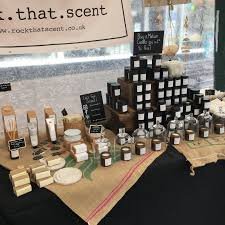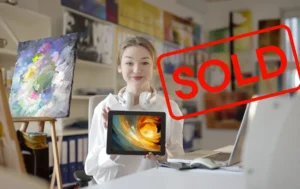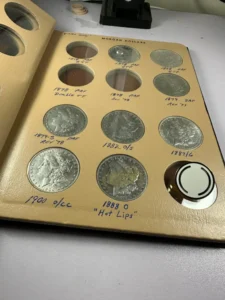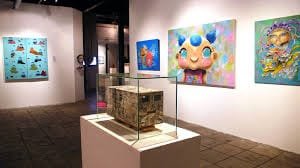Collecting starts as a passion. It is a love affair with rarity, a fascination with history, beauty, and the thrill of the find. From vintage coins to comic books, designer toys, sports cards, stamps, and NFTs, collectibles are deeply personal. They carry stories, culture, emotion, and in many cases, serious financial potential.
But what happens when that passion becomes a business?
Welcome to the world of collectibles entrepreneurship, a space where love for the craft meets sharp business sense. In today’s marketplace, collectors are not just preserving history. They are building profitable, respected businesses that blend art, curation, storytelling, and commerce.
Whether you are a lifelong collector ready to scale or a beginner eager to turn your curiosity into income, this guide will walk you through everything you need to know about starting a successful collectibles business.
1. Understand the Landscape of Collectibles
The world of collectibles is vast and diverse. Each niche has its own culture, price behavior, storage needs, and buyer demographics. Before you jump in, understand the broader categories and choose your lane.
Popular Types of Collectibles:
Vintage toys and action figures (e.g., Star Wars, Barbie, LEGO)
Trading cards (sports cards, Pokémon, Magic: The Gathering)
Coins and currency (numismatics and rare foreign notes)
Comic books and graphic novels
Fine art and prints
Autographs and memorabilia
Luxury watches and timepieces
NFTs and digital collectibles
Sneakers and streetwear
Vintage vinyl records, books, and posters
Each type has different market behaviors. For instance, comic book collectors value grading and preservation, while sneakerheads obsess over limited drops and authenticity. Choose the category that resonates most with your passion and business goals.
2. Define Your Niche
In the collectibles market, the riches are in the niches.
Trying to sell “everything” will dilute your brand. Instead, choose a specialized focus where you can build authority, stand out, and attract a loyal community.
Examples of tight niches:
Pre-1970s U.S. coins in pristine condition
Graded Pokémon cards from the 1990s
Original Marvel comics from the Silver Age
Limited-edition Supreme and Nike sneaker releases
Autographs from Golden Era Hollywood stars
First edition vinyl albums from jazz musicians
Vintage Japanese vinyl toys
Historic sports memorabilia (Olympics, World Cup)
The more focused your niche, the more you will be able to speak the language, know the market, and become a trusted source.
3. Validate the Market Demand
Before turning your hobby into a business, make sure there is real market demand.
Start by researching:
What items are trending or gaining value in your category?
What are the most searched collectibles on platforms like eBay or Goldin?
Are there active communities around this niche on Reddit, Instagram, or Discord?
Are people willing to pay premium prices for quality, rarity, or provenance?
Use tools like:
Terapeak (eBay analytics)
Google Trends
WorthPoint
Heritage Auctions archives
Auction result databases
If you notice growing interest, limited competition, and consistent resell activity, that is a strong signal to move forward.
4. Start with What You Know and Love
The best businesses begin with deep authenticity.
Instead of chasing the hottest trend, begin with a category you understand. One where you can spot fakes, appreciate details, and connect emotionally with fellow collectors.
Buyers sense when sellers know their stuff. It builds trust. Passion gives you the edge when negotiating, pricing, curating, and storytelling.
If you are starting with your collection, that is even better. It allows you to build inventory while testing the market with zero upfront sourcing cost.
5. Source Quality Inventory Strategically
Great inventory is the heart of any collectibles business. You need rare, desirable, and well-preserved pieces that will excite collectors and justify premium pricing.
Where to Source Collectibles:
Estate sales and auctions
Online marketplaces (eBay, Etsy, Whatnot)
Local antique shops and flea markets
Collector forums and Facebook groups
Consignment from other collectors
Wholesalers or liquidation lots
Direct purchases from private sellers
When sourcing:
Verify authenticity
Inspect for flaws, restoration, or damage
Research recent sales and rarity
Ask for provenance or grading if available
Be patient. Quality takes time, and shortcuts lead to mistakes, like buying counterfeits or overpaying.
6. Learn to Grade and Authenticate
In collectibles, condition is king, and authenticity is everything.
Grading systems vary by category. Learn the standards in your niche. For example:
Comic books are graded on a 10-point scale (CGC)
Trading cards use PSA, BGS, or CGC grades
Coins have professional grading from PCGS or NGC
Sneakers and watches require physical and digital authentication
For high-value items, always use a third-party grading service. It builds credibility and drastically increases your selling power.
7. Build Your Brand as a Collector-Seller
Your brand as a collector adds legitimacy to your business. Build it with purpose.
Key Brand Elements:
A collector-first story (Why this category? What is your expertise?)
A clean, professional logo and name
A consistent tone of voice in listings and communication
High-quality photos with clean backdrops
Honest item descriptions, including flaws
Transparent pricing and refund policies
Collectors trust other collectors. They do not want faceless sellers. They want connection, knowledge, and care.
8. Choose Your Sales Channels Wisely
Where you sell matters just as much as what you sell.
Top Platforms for Collectibles:
eBay: Massive traffic and advanced filters
Etsy: Great for handmade, vintage, or curated collections
Whatnot: Live auction streaming for real-time excitement
Instagram/Facebook Marketplace: Direct-to-collector sales
Specialty forums and Discords: Highly targeted, loyal buyers
Your website or Shopify store: Full brand control
Start where your audience already shops, and then diversify as you build traction.
9. Price with Strategy and Transparency
Pricing in collectibles is part science, part psychology.
Factors to consider:
Item rarity
Demand and current hype
Condition and grading
Provenance or story
Platform competition
Use auction history and price guides, but do not be afraid to set your own premium if your item is truly rare or in pristine shape.
Offer clear explanations for pricing and encourage negotiation respectfully. Fairness builds a loyal buyer base.
10. Market Like a Storyteller
Collectors love stories. They want to know why something matters, not just what it is.
Use your listings and social media to tell:
The history of the item or franchise
Where the item was sourced or discovered
The maker’s background
What makes this piece rare
The emotional or cultural value it holds
Strong storytelling adds perceived value and builds emotional connection, which is priceless in the collectibles space.
11. Deliver an Exceptional Buying Experience
Customer experience is your secret weapon.
In collectibles, the way something arrives is part of the value. Go beyond a padded envelope.
Tips for packaging:
Use sturdy, brand-stamped boxes or wrapping
Include a handwritten note or certificate
Wrap items gently with acid-free paper
Add a collectible card, bonus item, or coupon
Communicate tracking and handling time clearly
Delight your buyer, and you will earn referrals, reviews, and repeat sales.
12. Manage Inventory, Records, and Growth
As your business grows, systems become essential.
Use tools to:
Track what you bought and sold (with cost, profit, and dates)
Manage inventory with detailed descriptions
Monitor buyer feedback and return rates
Stay updated on tax laws and income thresholds
Automate shipping labels and invoices
Apps like Airtable, QuickBooks, Shopify, or niche inventory managers will save you hours of chaos later.
Growth should be measured, not messy.
13. Stay Ahead of Trends, But Rooted in Value
Hype is real in collectibles. Prices spike fast and crash just as quickly.
As a seller, it is important to:
Understand when to ride trends (e.g., a movie release boosts demand)
Know when to hold valuable pieces until their moment returns
Avoid overbuying hype items that may not age well
Invest in timeless items that hold or grow in value
Collectors respect sellers who balance knowledge with integrity. Be honest about investment potential, but do not make empty promises.
14. Build a Community Around Your Brand
Legacy sellers often grow by building culture, not just commerce.
Ways to foster community:
Host Instagram Lives or Whatnot auctions
Share educational content and collect tips
Start a newsletter for your collector group
Feature customer photos or collector spotlights
Offer sneak peeks or early access to repeat buyers
The more you give your audience a place to connect, the more they will invest in your brand long term.
15. The Joy of Legacy, Profit with Heart
At its core, a collectibles business is more than a profit engine. It is a chance to share joy, preserve culture, and connect people to the past and future through meaningful objects.
Every item you source, list, and sell becomes part of someone’s personal story. That is the legacy you are building, and that is where passion meets profit in its purest form.
Conclusion: From Collector to Creator of Value
Turning your passion for collectibles into a business is not about selling off what you love. It is about scaling what you love with intention, care, and strategy.
Your collection can become a thriving enterprise with the right niche, authentic branding, attention to detail, and a service-first mindset. Not only will you earn income, but you will also preserve art, culture, and history for future generations.
Because in the end, the most valuable thing you sell is not just a rare item. It is the feeling that comes with finding it, and the trust that comes from buying it from someone who truly understands.






